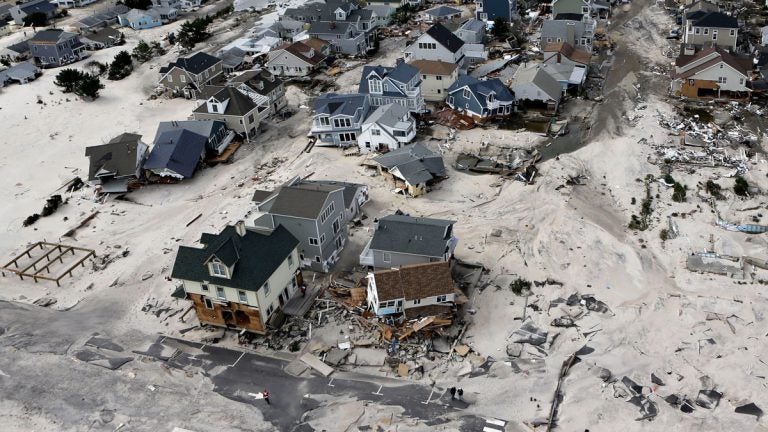New Jersey still has $1.2 billion left in federal Sandy aid
The Murphy administration vowed to do everything possible to reduce the impact of 'clawbacks' of Sandy grant money from homeowners who were told they were overpaid.

This aerial photo shows the destroyed homes left in the wake of Superstorm Sandy on Wednesday, Oct. 31, 2012, in Ortley Beach, N.J. (Mike Groll/AP Photo)
New Jersey Department of Community Affairs Commissioner Sheila Oliver told lawmakers Wednesday the state is making efforts to help families who are still not back home almost six years after Superstorm Sandy damaged their primary residence.
Oliver, who also serves as New Jersey’s lieutenant governor, said the state has $1.2 billion of the $4 billion in Sandy recovery aid it got from the federal government.
“The U.S. Department of Housing and Urban Development has given us until 2022 to utilize that funding.,” she said. “So we think that, at the end of the day, we will be able to satisfy and support people who still have to find their way back home.”
New Jersey Organizing Project director Amanda Devecka-Rinear said that would be amazing.
“If we can just give people the help they need to walk people through finishing the process and whatever additional funds they need to get home, let’s do it,” she said. “It’s been too long. Let’s get on top of this and make it work.”
About a thousand families in New Jersey are still displaced from their Sandy-damaged homes.
The administration will do everything possible to reduce the impact of “clawbacks” of Sandy grant money from homeowners who were told they were overpaid, according to Oliver.
Doug Quinn, whose home in Toms River was destroyed by Sandy, said he’s hoping there’s a solution to make the clawbacks end. Quinn and other Sandy victims received federal assistance through the state’s RREM program.
“I haven’t received the clawback letter. But I know that I just can’t relax. So, when people get home, the nightmare is not over,” said Quinn. “We’re hearing people say it takes a year to two years to close out of the RREM process. So even though they may be in their homes, they’re still living through this nightmare and just waiting to open the mailbox and see a clawback letter come in.”
If all else fails, Oliver said, the state will push for an extended time for homeowners to repay their disallowed costs.
WHYY is your source for fact-based, in-depth journalism and information. As a nonprofit organization, we rely on financial support from readers like you. Please give today.




